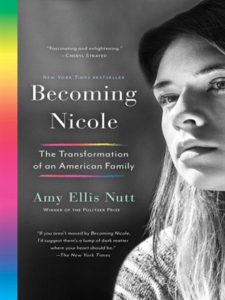Hi. Usually when I do a video, it’s meant to explain and help viewers better understand various important topics. But right now, I’m the one trying to reach an understanding of something that happened in my life. Right now, I just really need to be heard, and I’m hoping that you can listen and extend me your own understanding as well.
Many of you might not know this, but Gender Analysis is based in Orlando, Florida. Heather, Penny, and I all live here. On the Saturday night before the shooting at Pulse, we were deciding where we should spend the evening downtown. We were looking into getting a hotel room near Pulse and going out to the club that night. Heather has been there many times before – it was the first gay club she went to after she came out as a lesbian, and prior to our wedding in 2014, she had her bachelorette party there.
The booking site ended up giving us a slightly lower price for a hotel near Universal Studios CityWalk, so that’s where went on Saturday night. If we’d had even a slightly stronger preference for going out clubbing that night, if we’d been just a little more willing to pay extra, if the booking site had priced and sorted its listings differently, if we’d looked 10 minutes earlier or later and missed seeing the results reorder themselves right before our eyes, there was every reason that we would have been at Pulse that night. That is how close this came to me, to Heather, to Penny. Death came that close to us. Continue reading →

 I’ve often been asked which books I would recommend for those who are interested in learning more about transgender topics. Usually, there aren’t many I can suggest – popular coverage of these issues often contains deficiencies that misinform readers about key aspects of our lives and experiences. I’m happy to say that
I’ve often been asked which books I would recommend for those who are interested in learning more about transgender topics. Usually, there aren’t many I can suggest – popular coverage of these issues often contains deficiencies that misinform readers about key aspects of our lives and experiences. I’m happy to say that 
